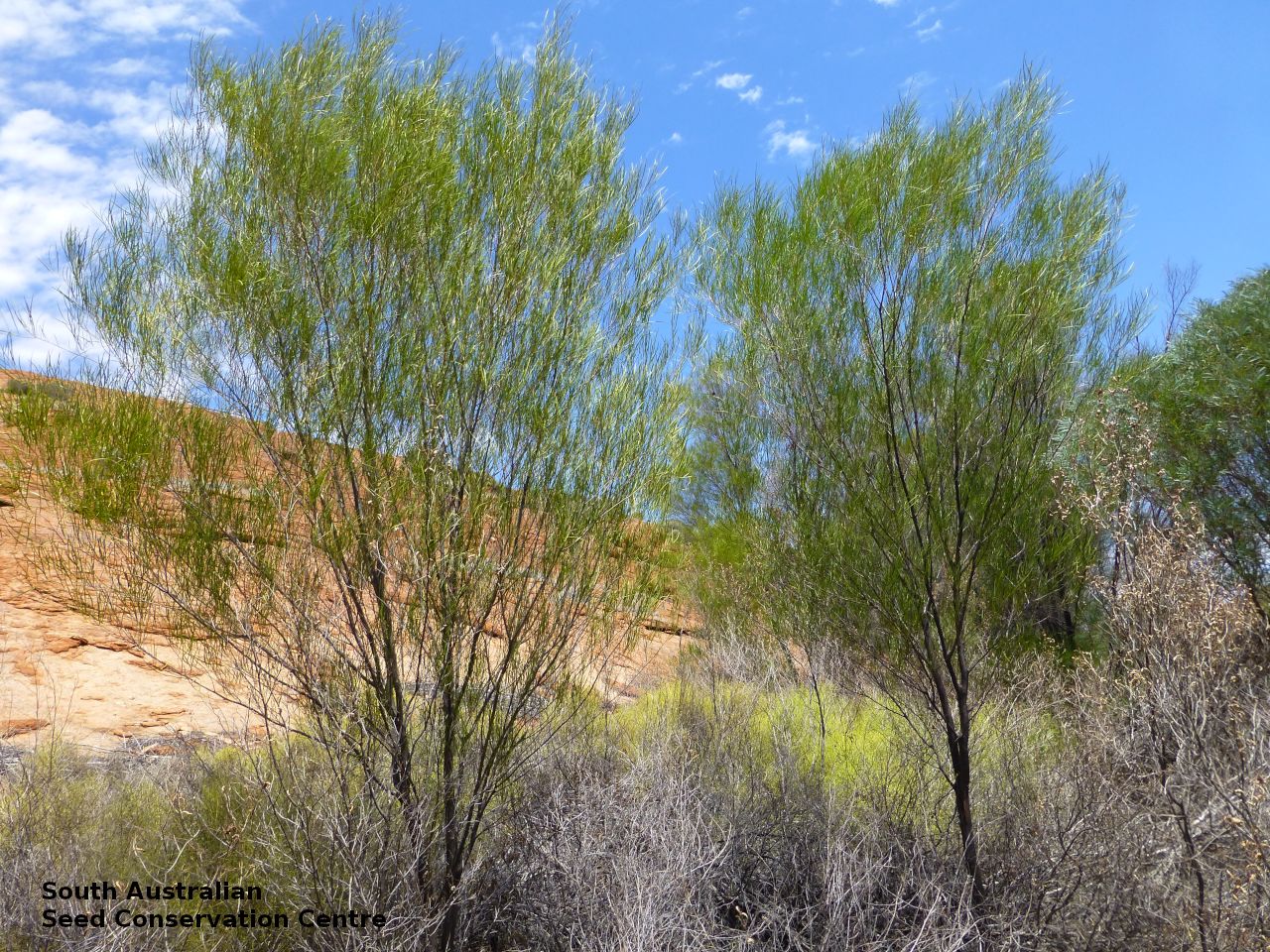
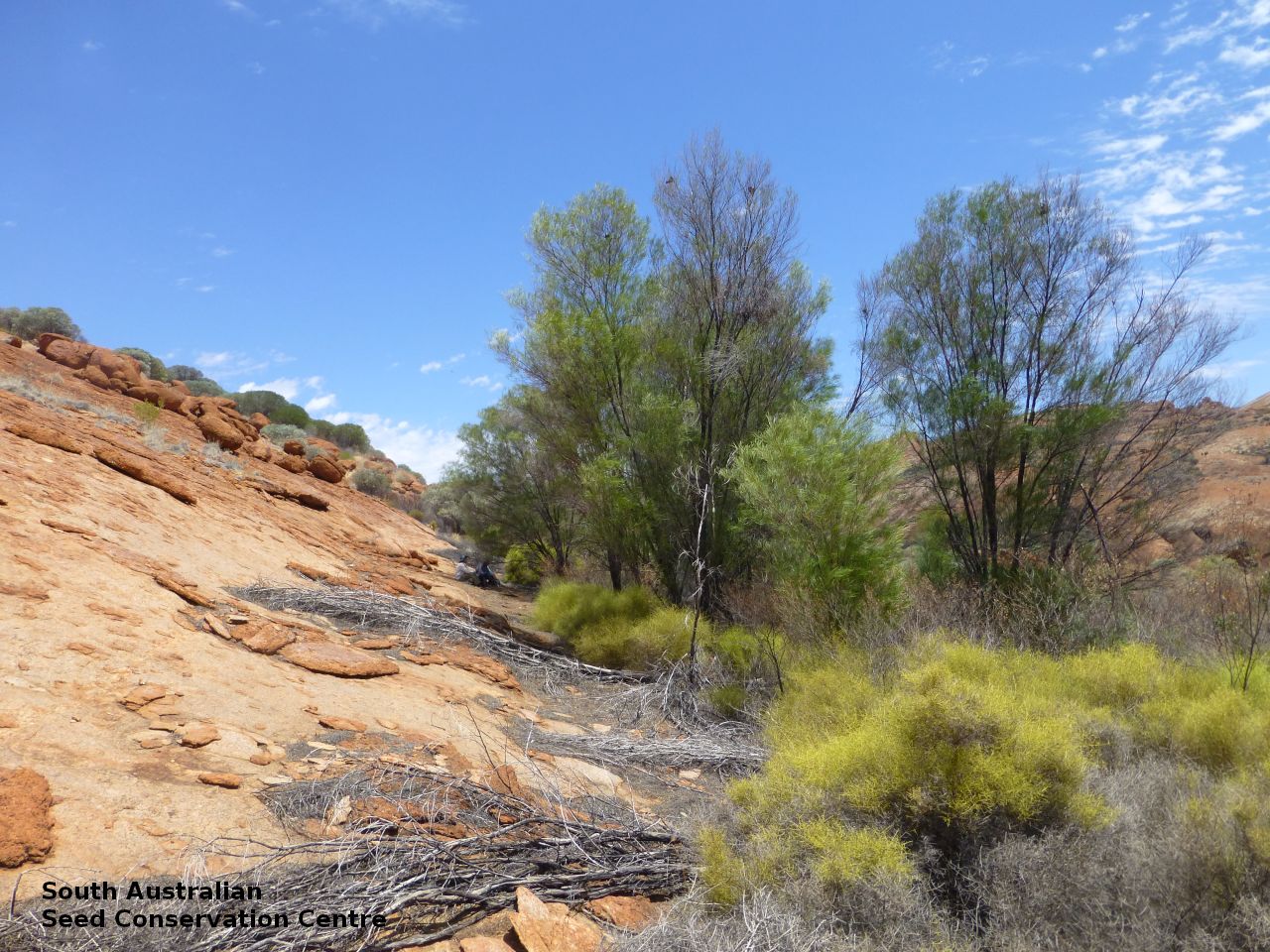
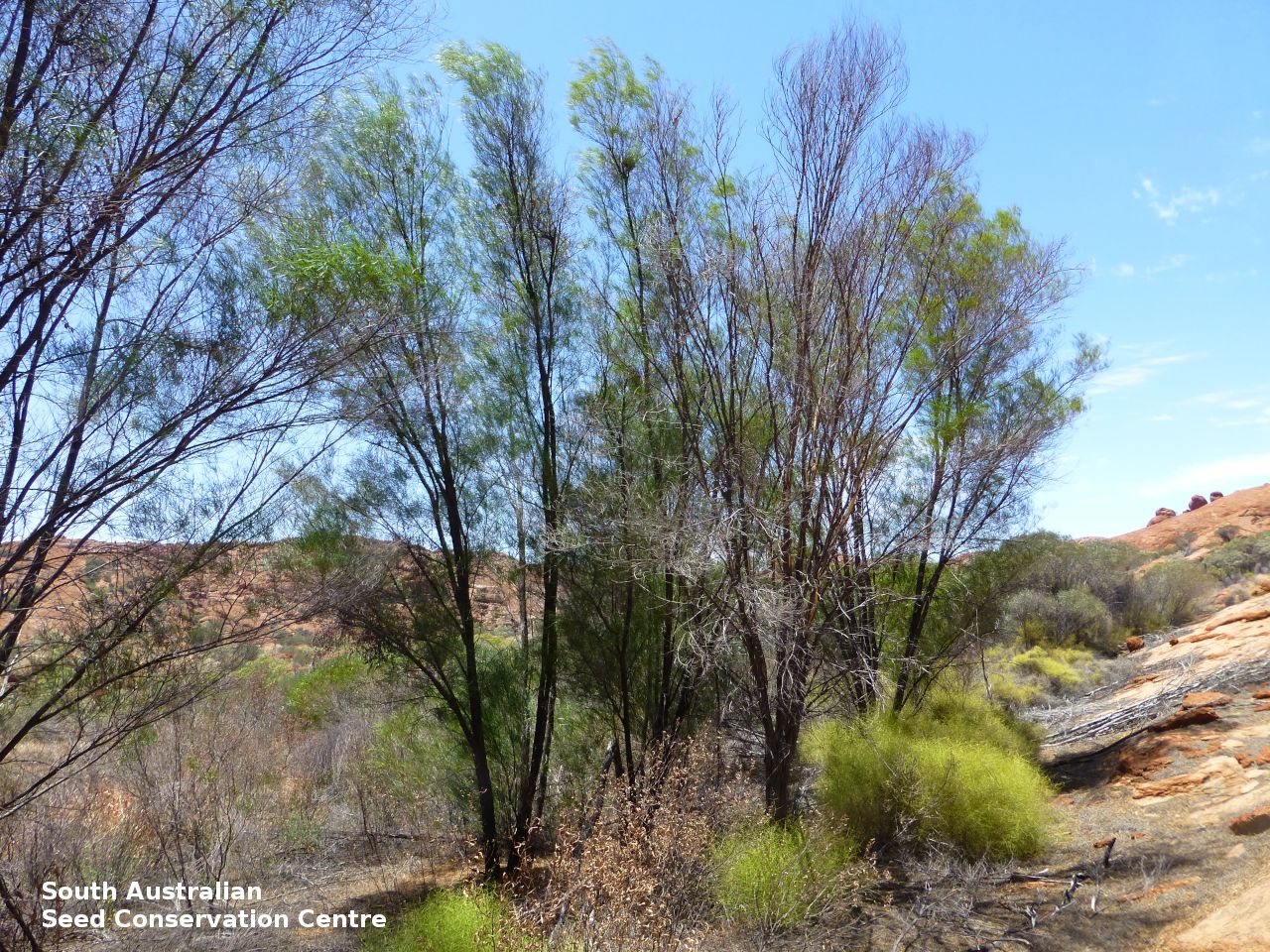
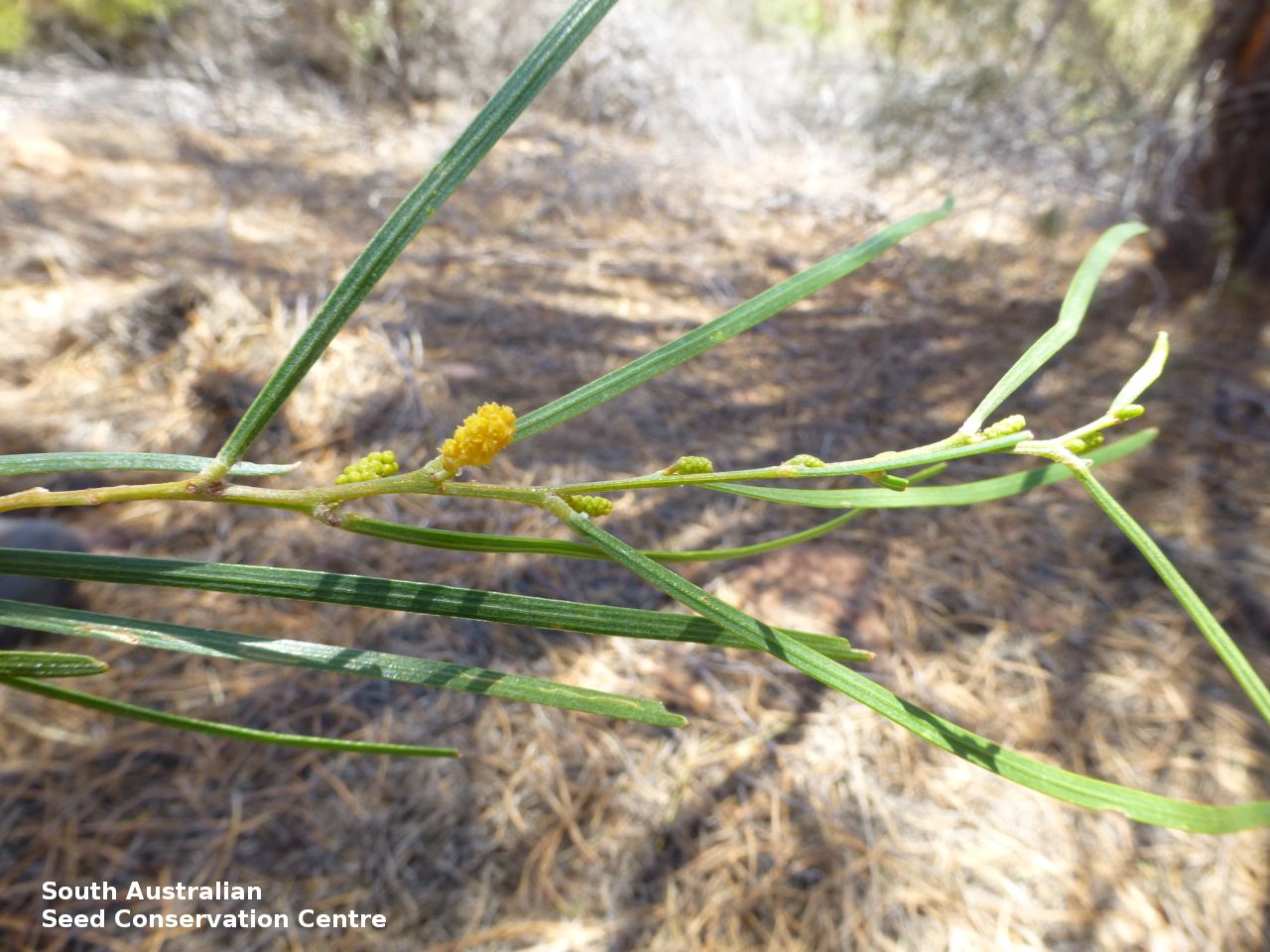
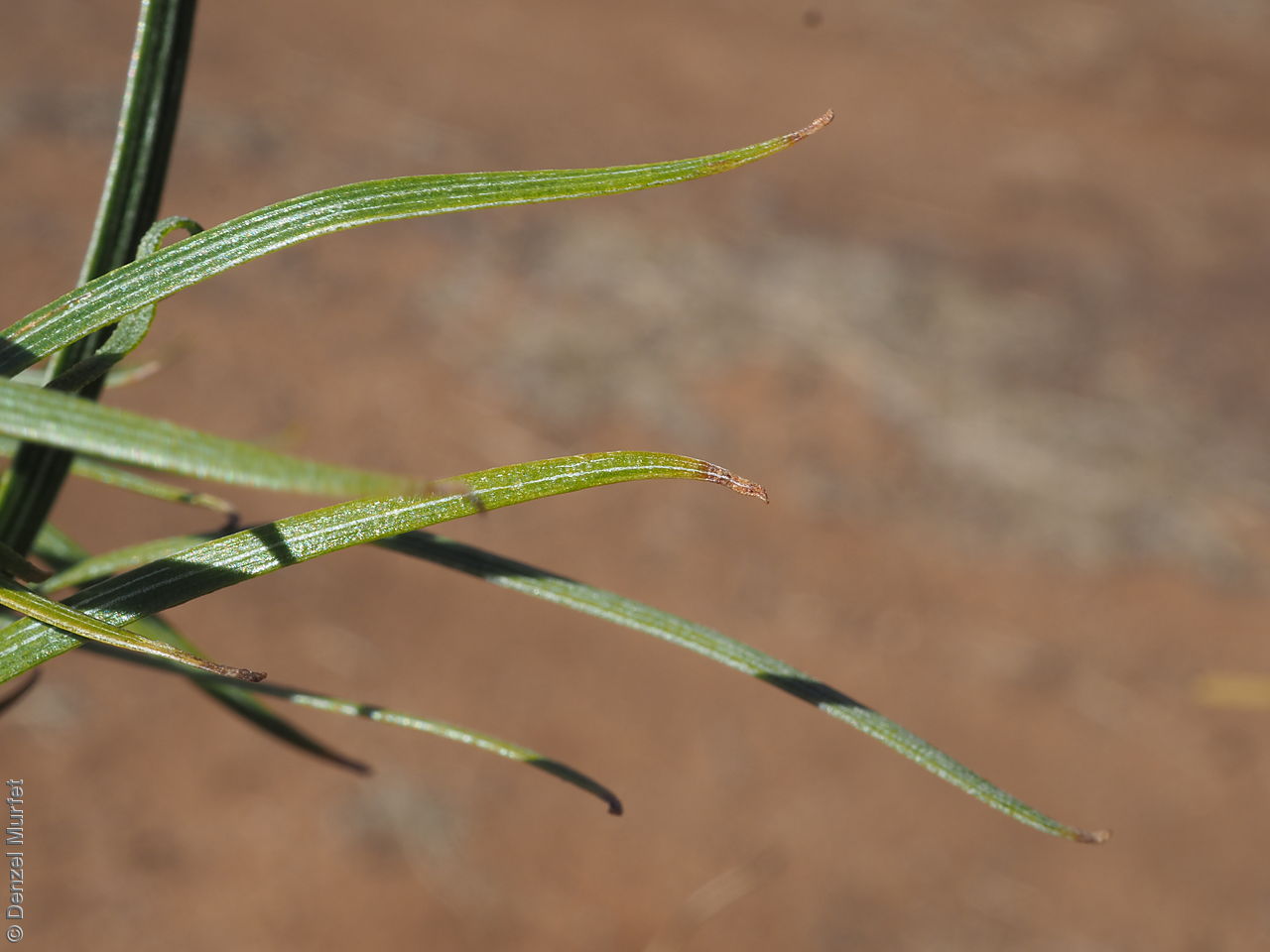
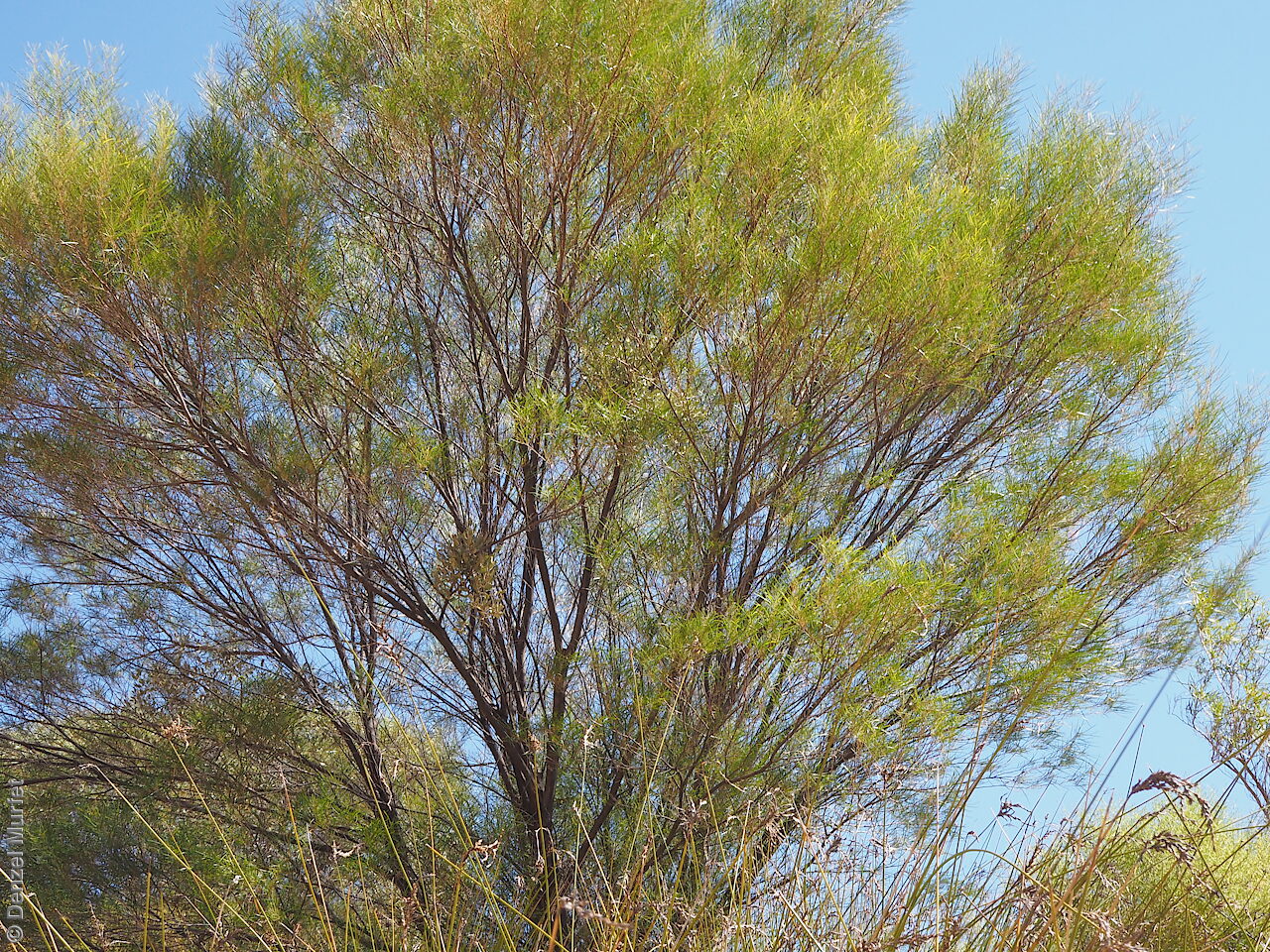
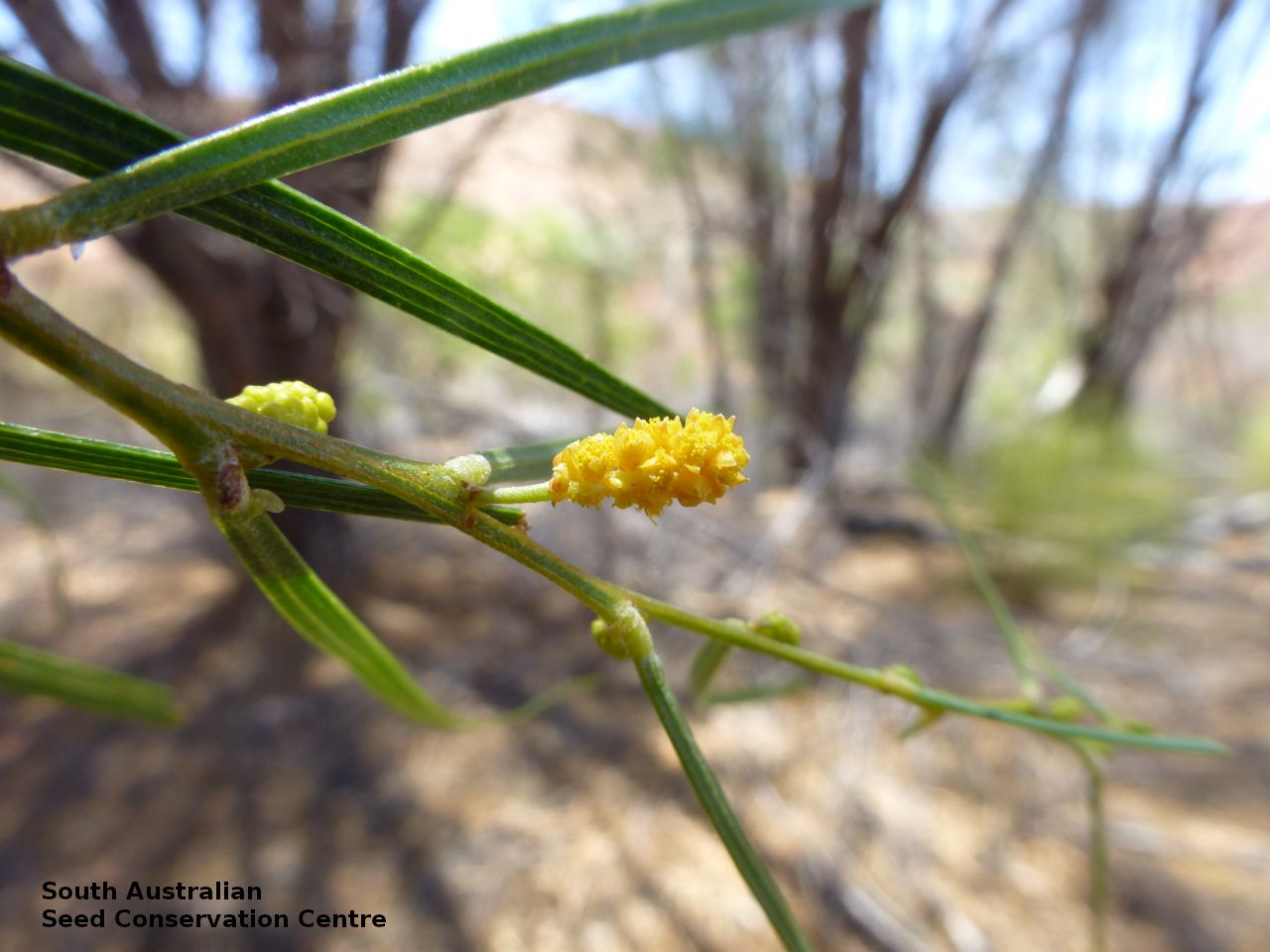
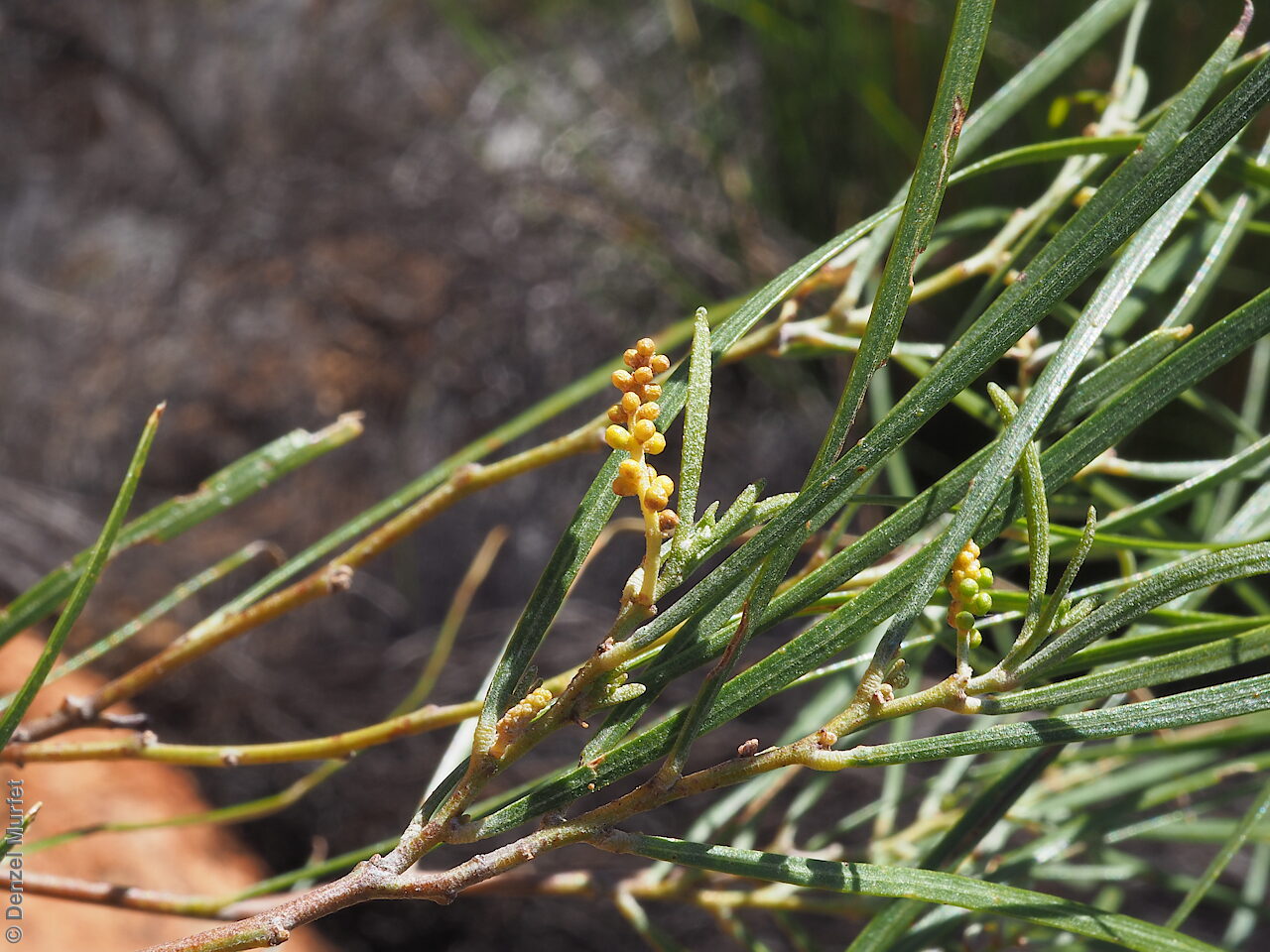
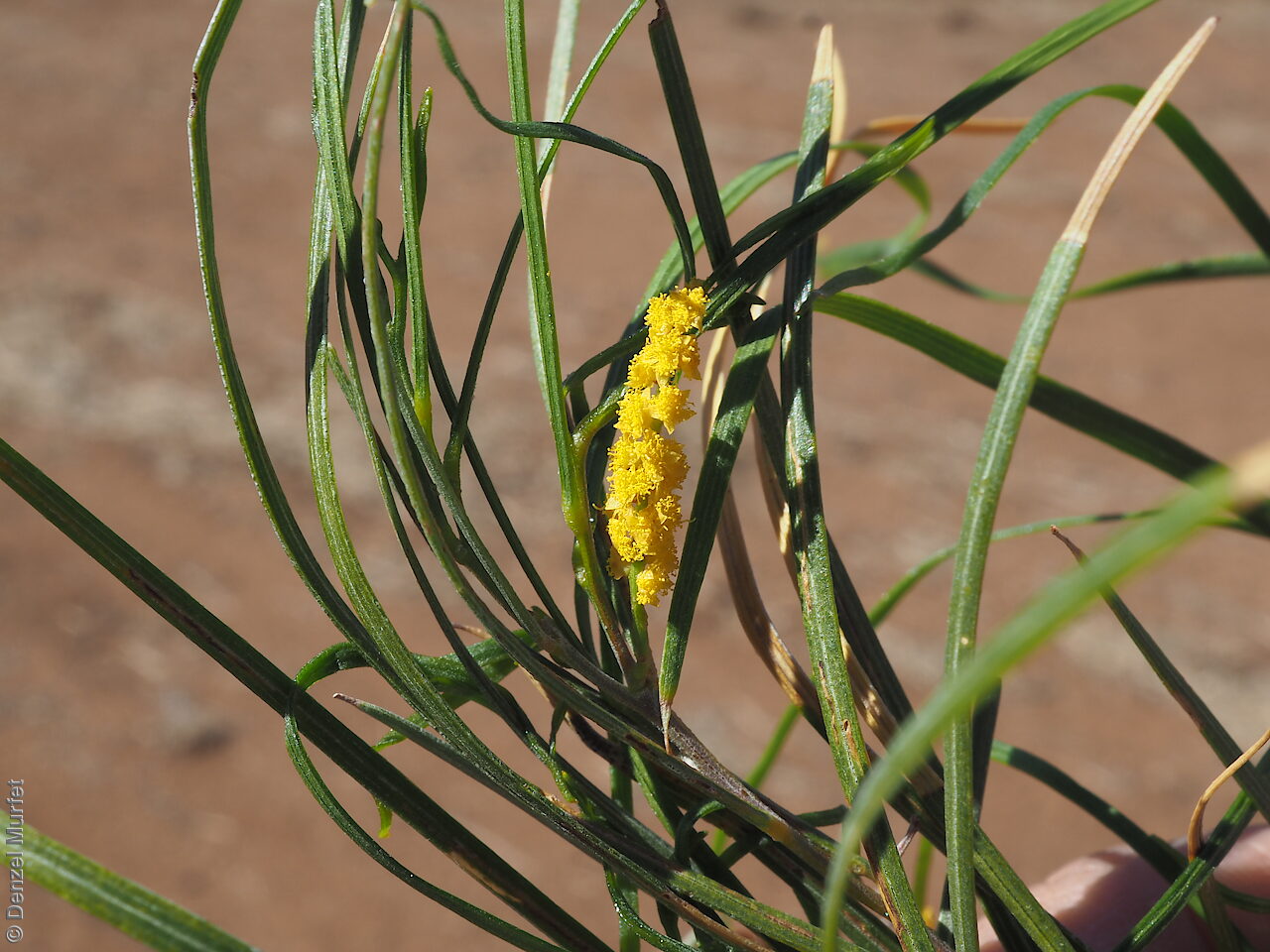
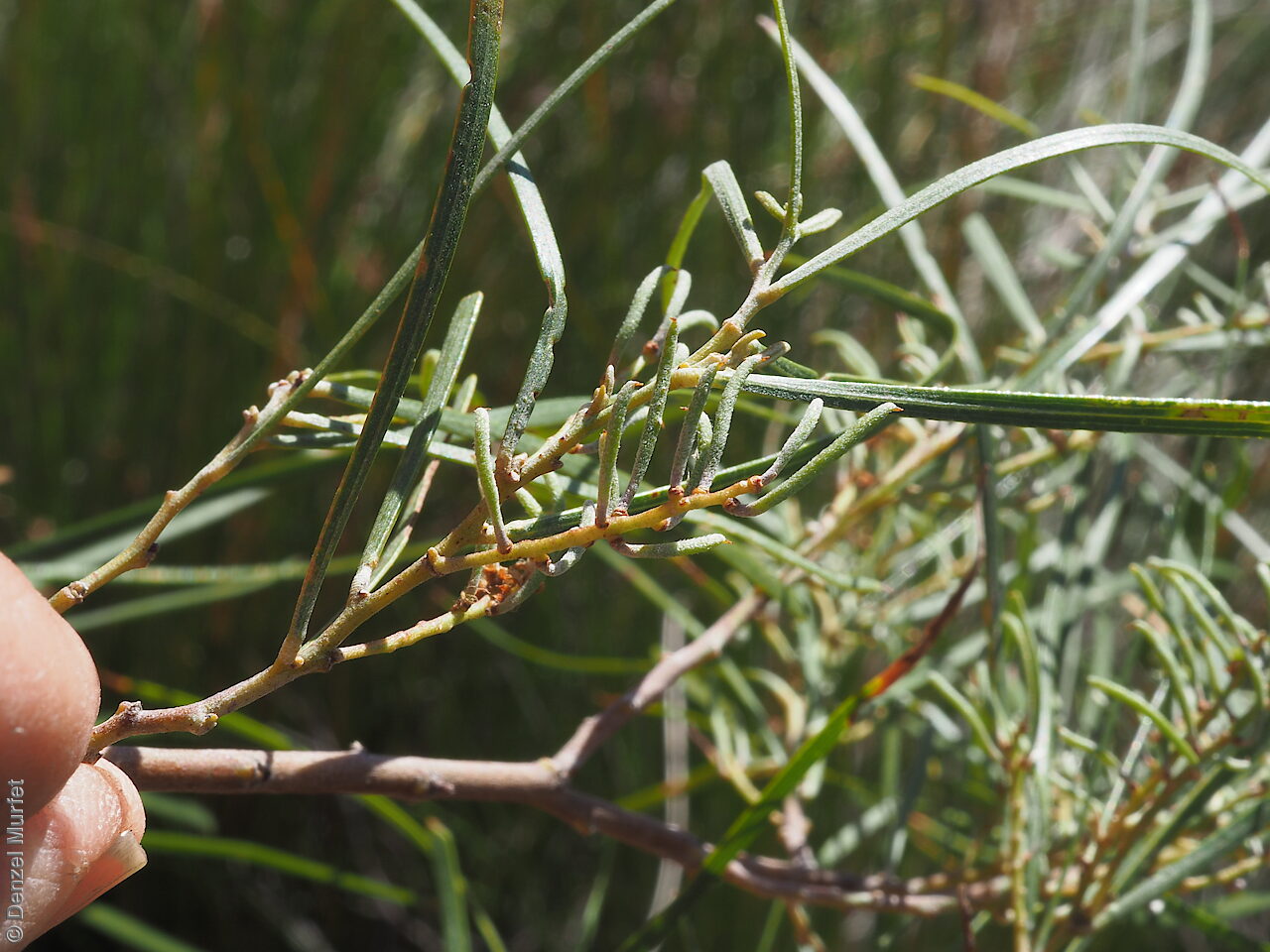


Botanical art
Etymology
Acacia from the Greek 'akakia' and derived from 'ake' or 'akis' meaning a sharp point or thorn and 'akazo' meaning to sharpen. Dioscorides, the Greek physician and botanist used the word in the 1st century AD for the Egyptian thorn tree, Acacia Arabica. Symonii named after David Symon (1920-2011), South Australian botanist, renowned worldwide for his study of the Solanaceae family and the first person to collect this species.
Distribution and status
Found in the far north-western corner of South Australia, growing in stony red soil amongst granitic rocks on lower slopes of low, rocky hills, with mulga. Also found in Western Australia and the Northern Territory. Native. Rare in South Australia. Rare in the other states.
Herbarium region: North Western
NRM region: Alinytjara Wilurara
AVH map: SA distribution map (external link)
Plant description
Tall shrubs or small trees to 4 m high with a single trunk or several reddish-brown stems arising at ground level, aging to grey. Leaves linear to 14 cm long and 3 mm wide, tapering slightly at each end, straight or slightly curved, not rigid, viscid when young, glabrous to sparsely and minutely pubescent, apices delicately hooked, central vein more prominent, lateral veins 3-5. Inflorescence axillary, solitary, short cylindrical with yellow flowers. Flowering between August and February. Fruits are linear brown pod to 70 mm long and 3 mm wide, straight or slightly curved, flat but raised over seeds and slightly constricted between seeds. Seeds are light brown shiny seed to 3 mm long and 1.5 mm wide. Seed embryo type is investing.
Seed collection and propagation
Collect seeds between November and March. Collect pods that are split or turning brown, with hard, black seeds inside. Place the pods into a tray and leave to dry for a week. Rub the dried pods by hand or with a rubber bung to dislodge the seeds. Use a sieve to separate the unwanted material. Store the seeds with a desiccant such as dried silica beads or dry rice, in an air tight container in a cool and dry place. This species has physical dormancy that needs to be overcome for the seed to germinate (e.g. nicking or softening the seed coat).